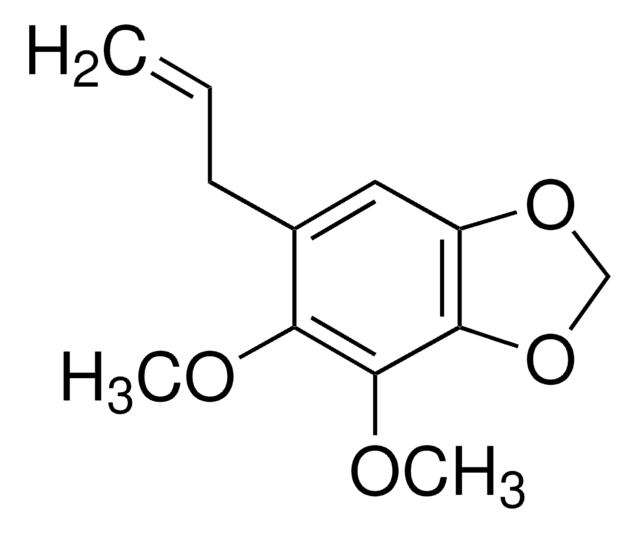Wichtige Dokumente
PS306
4-(2,4-Dichlorphenoxy)-buttersäure
analytical standard
Synonym(e):
2,4-DB
About This Item
Empfohlene Produkte
Qualität
analytical standard
Verpackung
pkg of 250 mg
Hersteller/Markenname
Chem Service, Inc. PS-306
Methode(n)
HPLC: suitable
gas chromatography (GC): suitable
mp (Schmelzpunkt)
118-120 °C (lit.)
Anwendung(en)
agriculture
environmental
Format
neat
SMILES String
OC(=O)CCCOc1ccc(Cl)cc1Cl
InChI
1S/C10H10Cl2O3/c11-7-3-4-9(8(12)6-7)15-5-1-2-10(13)14/h3-4,6H,1-2,5H2,(H,13,14)
InChIKey
YIVXMZJTEQBPQO-UHFFFAOYSA-N
Suchen Sie nach ähnlichen Produkten? Aufrufen Leitfaden zum Produktvergleich
Anwendung
Signalwort
Warning
H-Sätze
Gefahreneinstufungen
Acute Tox. 4 Oral - Aquatic Chronic 2
Lagerklassenschlüssel
11 - Combustible Solids
WGK
WGK 2
Flammpunkt (°F)
Not applicable
Flammpunkt (°C)
Not applicable
Persönliche Schutzausrüstung
dust mask type N95 (US), Eyeshields, Gloves
Hier finden Sie alle aktuellen Versionen:
Analysenzertifikate (COA)
It looks like we've run into a problem, but you can still download Certificates of Analysis from our Dokumente section.
Wenn Sie Hilfe benötigen, wenden Sie sich bitte an Kundensupport
Besitzen Sie dieses Produkt bereits?
In der Dokumentenbibliothek finden Sie die Dokumentation zu den Produkten, die Sie kürzlich erworben haben.
Unser Team von Wissenschaftlern verfügt über Erfahrung in allen Forschungsbereichen einschließlich Life Science, Materialwissenschaften, chemischer Synthese, Chromatographie, Analytik und vielen mehr..
Setzen Sie sich mit dem technischen Dienst in Verbindung.







